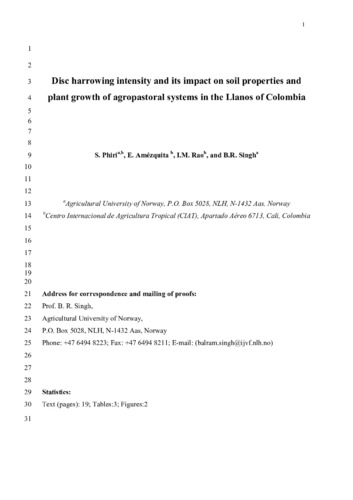Disc harrowing intensity and its impact on soil properties and plant growth of agropastoral systems in the Llanos of Colombia
Oxisols such as those of the Colombian Eastern Plains (Llanos) are susceptible to physical, chemical and biological degradation once brought into cultivation, especially under intensive use of machinery. The main objective of this study was to determine the impact of intensive disc harrowing (2, 4 or 8 disc harrow passes per year over 3 years) on soil physical and chemical properties, soil phosphorus dynamics, plant growth and nutrient acquisition of contrasting agropastoral systems on an Oxisol. The three main systems tested after 2 years of upland rice cultivation were grass-alone pasture (Brachiaria dictyoneura), green manure (Crotalaria juncea), and maize (Zea mays). Native savanna treatment was used as a control. Intensive disc harrowing improved macroporosity values of 0–5 cm soil layer up to 59% for grass-alone pasture system compared to native savanna. Disc harrowing significantly reduced bulk densities for pasture and green manure systems compared to the native savanna in the 0–5 cm soil layer. Intensive disc harrowing significantly improved volumetric moisture content of green manure and maize systems at 5–10 cm soil depth. The distribution of biologically, moderately and sparingly available P, organic P and total P varied under green manure, maize and grass-alone pasture systems. Two passes of disc harrow per year were sufficient for grass-alone pasture, while maize showed greater aboveground production and nutrient acquisition at 8 passes of disc harrow per year. The maize and green manure cropping systems were better than the grass-alone pasture system at separating the effect of increased number of disc harrow passes on soil physical and chemical characteristics.

